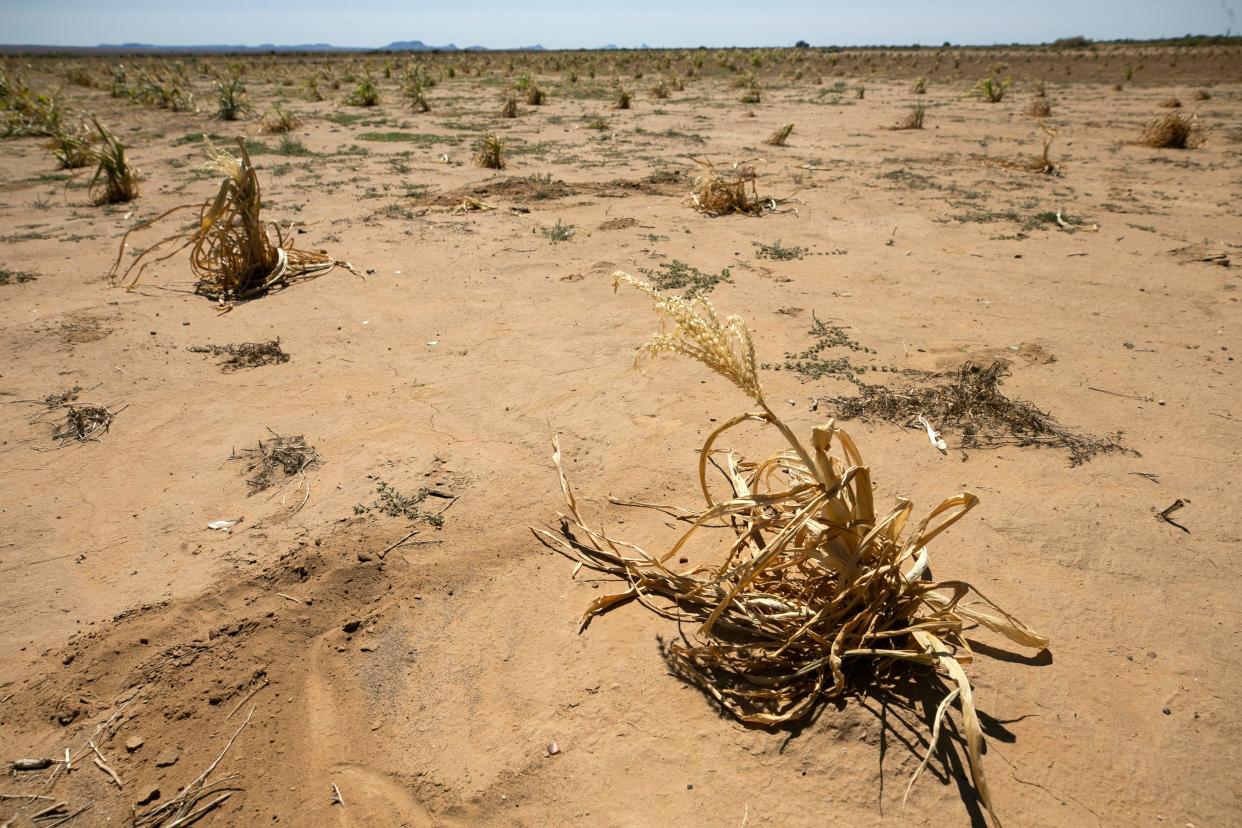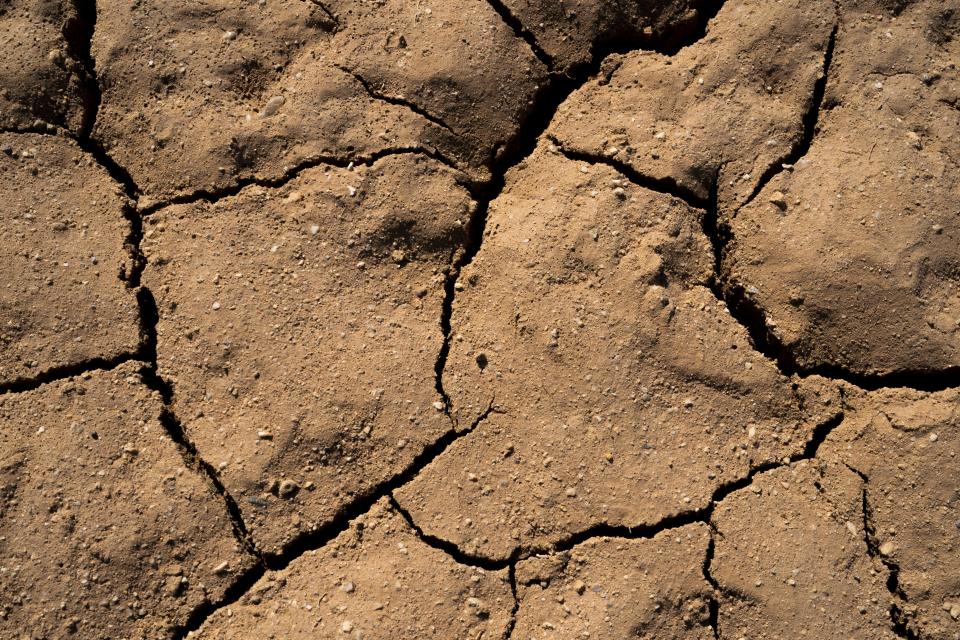Don't think of deserts as wastelands, researchers say, but as a key to our climate future

This story, like many, starts with rejection.
Jose Gruenzweig grew up in the lush, green hills of Switzerland and studied the cold, wet forests of Alaska before settling into his current position as associate professor of Agriculture, Food and Environment at the Hebrew University of Jerusalem.
Israel's climate is notably drier than those he'd lived in before, with scarce rainfall, mild winters, and hot, dry summers that produced one of the world's hottest temperatures ever recorded at 129 degrees Fahrenheit. As a keen observer of ecosystems, he couldn't help but ponder the differences.
Gruenzweig studies soil decomposition, among other things. The process of microbes breaking down dead plant material into nutrients that growing plants can use is a critical natural cycle in many ecosystems. In some conditions, soil can also capture and store carbon dioxide from the atmosphere, helping counteract the climate-warming effects of this common greenhouse gas.
In short, he spends a lot of time walking around looking at decaying plants. And one of the first things he noticed when he left Alaska for the semi-arid forests of Israel was that the pine needles on the forest floor seemed to decompose over the summer despite almost no exposure to moisture or intense sunlight, one or the other of which is typically thought to be required for the breakdown of organic matter.
More in this climate series: The latest from Joan Meiners, a column on climate change that publishes weekly
After a conversation with one of his graduate students, the two hypothesized that slight increases in humidity from overnight breezes off the Mediterranean Sea might actually be enough to facilitate decomposition in this drought-adapted ecosystem.
“And then I thought, well, with climate change, this can happen elsewhere.”
One of the most agreed-upon consequences of climate change is that, as increasing heat retained in the atmosphere by greenhouse gases catalyzes more chaotic weather patterns, dry areas will get drier and wet areas will get wetter. This prediction is intensifying discussions about the future of agriculture and how the shrinking Colorado River, for example, should be divided among seven western, drying U.S. states.
But scientists also expect an overall drying trend, with a growing proportion of the globe routinely experiencing extreme drought. To Gruenzweig, this meant that deciphering the unique ways drylands function, on large and small scales and on fast and slow timelines, would be a little bit like staring into science's future.
Chaotic weather: Not-so-natural disasters are on the rise. What in the world is going on?
With this goal in mind, he assembled an ecological think tank of researchers, including some in desert climates like Arizona, Spain and Utah who also routinely walk around pondering the state of drylands. They reviewed the existing literature and developed a list of 12 ecological processes they think control natural cycles in dry environments, that are distinct from the processes, or mechanisms in science-speak, that dictate how plants grow and decompose in wetter habitats.
But when they submitted their research paper to a top scientific journal for publication, the editor rejected it, explaining that research in drylands was a "special discipline, not of interest to the broader audience."
"I knew that this might happen," Gruenzweig said, "but still, I didn't expect it in such a blunt way. It made me angry."

Deserting desert dwellers
About 41% of the Earth's land surface is currently classified as dryland, or water-limited, by the United Nations' Food and Agriculture Organization. Some scientists anticipate that, with climate change, up to 56% of global land area could become water-stressed by the end of this century. More than 2 billion people live in these regions.
But drylands are distributed in swaths across northern and southern Africa, Australia, the Middle East, western and northern Asia and patches of western North and South America, while modern science has mostly unfolded in regions with wetter, more temperate climates, like western Europe and the eastern United States.
Gruenzweig thinks this might explain the initial lack of interest in his 12 mechanisms.
"From our perspective, what we're studying here is of importance to us (in drylands), but it's also of importance to more moist regions now that they will experience conditions that are going to be similar to our conditions," Gruenzweig said. "Ecosystem services (are) going to change now with climate change. Human well-being is affected by how nature functions and how these mechanisms come into play."
Last week: Sustainable spending or 'sustainobabble'? A new group of experts will try to sort it out
On the opposite side of the drying planet, in northern-hemisphere-centric terms at least, Heather Throop, a professor and global futures scientist at Arizona State University, agrees.
“There’s just a huge amount of geographic and sociopolitical bias where we’ve had so much amazing research in these places where it is much wetter," Throop said. "And we see that in these cultural biases around what is a 'normal' system and these cultural biases where people think deserts are wastelands. You see it in movies like 'Dune.'"
These traditional scientific biases won't serve us in a warming, drying world, Throop warns.
Of those people living in dryland environments, 90% are in developing nations. Drylands contain 27% of global forests, which help sequester carbon and slow global warming. Another 14% of drylands are used to farm crops. And about half of global livestock production occurs on drylands, Throop said.
Even with increasing global desertification due to climate change on the horizon, though, research on how ecosystems will adapt is scant. That's particularly true for drylands that are about to get drier.
“That story, that’s not written yet," Throop said. "We can speculate on what negative consequences there will be for organisms involved. There’s been debate about whether animals and plants that are present in drylands, if they’re going to be less vulnerable than in wetter systems because they’re already adapted to being dry. Or are these plants already at their physiological limits and that’s as far as they’re going to be pushed?"
Drylands are key in climate research
On the list of 12 dryland mechanisms compiled by Gruenzweig, Throop and colleagues are processes like:
Hydraulic redistribution, by which desert plants redistribute moisture in the soil from deeper, wetter layers to shallow, dry layers through the root system;
The formation of biological soil crusts, which stabilize soil, contain dust and retain nutrients and moisture;
Vegetation patchiness, which occurs when wind and water push limited nutrients laterally across a desiccated landscape, determining where plants can grow;
And humidity-enhanced biotic activity, the ability of decomposition to occur in dry habitats with the infusion of just a tiny bit of moisture that Gruenzweig observed in Israel.
Mechanisms are ecologist bread-and-butter. But the editor who rejected the team's first manuscript might be correct in assuming that most average people won't care to hear about them in detail.
Still, an attitude that research in drylands doesn't belong in the mainstream scientific literature potentially jeopardizes the futures of more than 2 billion people, many of whom are members of poor, minority or otherwise disadvantaged groups that will already face some of the gravest consequences of climate change. To Throop, this might be the most offensive part of the science gatekeeping they experienced.
"Much of the historical scientific tradition didn't value dryland systems. But these are areas where human population is growing much faster than average, and you certainly see that in Phoenix, but it's worldwide," Throop said. “They hold this really important key to climate change. Especially in developing nations, it’s imperative that we understand these systems now."
Justice in climate action: Climate report draws an arc toward environmental justice, seeking equitable emissions cuts
In July, their paper on the 12 dryland mechanisms that control ecosystem functioning in a drier and warmer world was published by another top-tier scientific journal, Nature Ecology and Evolution.
And it spells out more than just gloom and doom for drying lands. Some of the mechanisms identified might function to buffer the effects of climate change. Hydraulic redistribution, for example, can help plants deal with drought. But it's still unknown to what extent these abilities are baked into existing plant communities in wet areas that may become drier.
"Plants in temperate or tropical regions, they might not be able to get enough water through their leaves. It might be enough to cope with shortages or bridge dry periods, but if it happens over longer periods, it can be critical,” Gruenzweig said.
The most important thing now is that scientists, planners and leaders appreciate deserts as a scientific and cultural resource and potentially a window into our climate future, even if they aren't interested in mechanisms.
But the story doesn't end here. Though the once-rejected paper has now been published, Gruenzweig says understanding drylands is vital for mitigating global damage expected from climate change, and he's passionate about these ideas reaching as many people as possible in dryland and temperate corners of the world.
"When the paper was published, I did something that I never do. I sent it to many people and put it on Twitter," he said. "I wrote that 'here we published a paper and the point we make is that drylands matter.' This was the message in the paper, that people out there in the more temperate regions should pay attention to drylands."
Joan Meiners is the Climate News and Storytelling Reporter at The Arizona Republic and azcentral. Before becoming a journalist, she completed a doctorate in Ecology. Follow Joan on Twitter at @beecycles or email her at joan.meiners@arizonarepublic.com.
Support climate coverage and local journalism by subscribing to azcentral.com at this link.
This article originally appeared on Arizona Republic: The world's deserts could be key to understanding climate change

